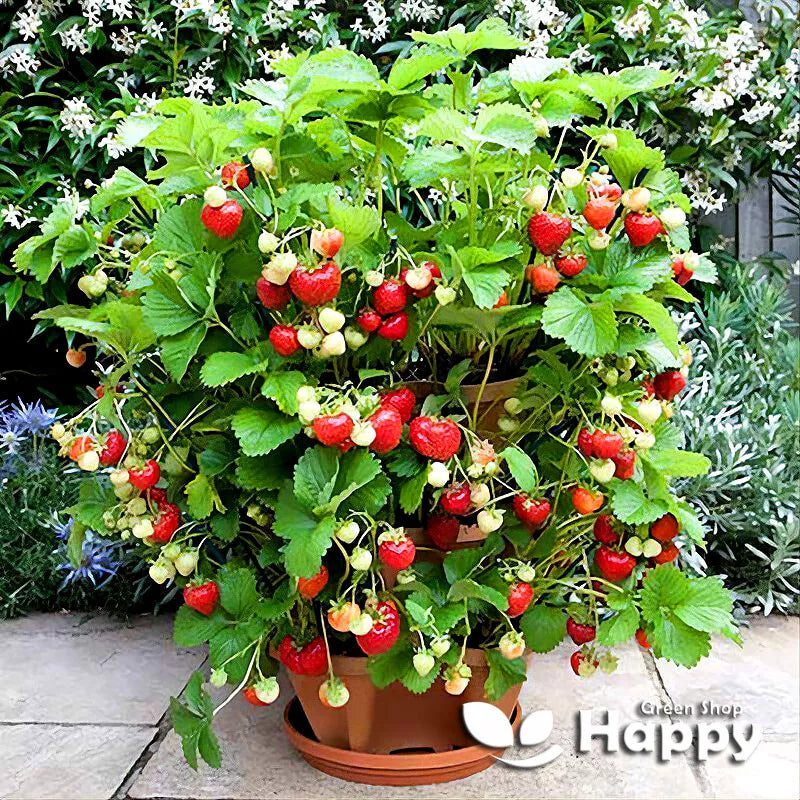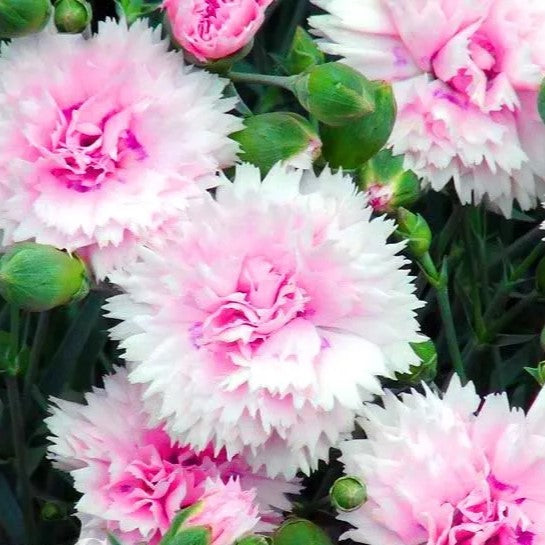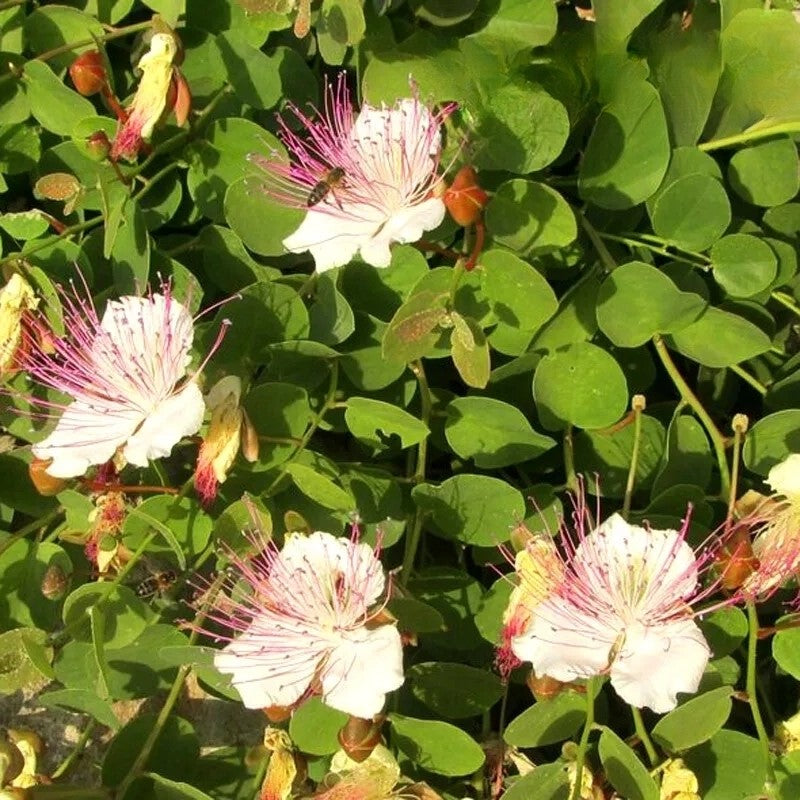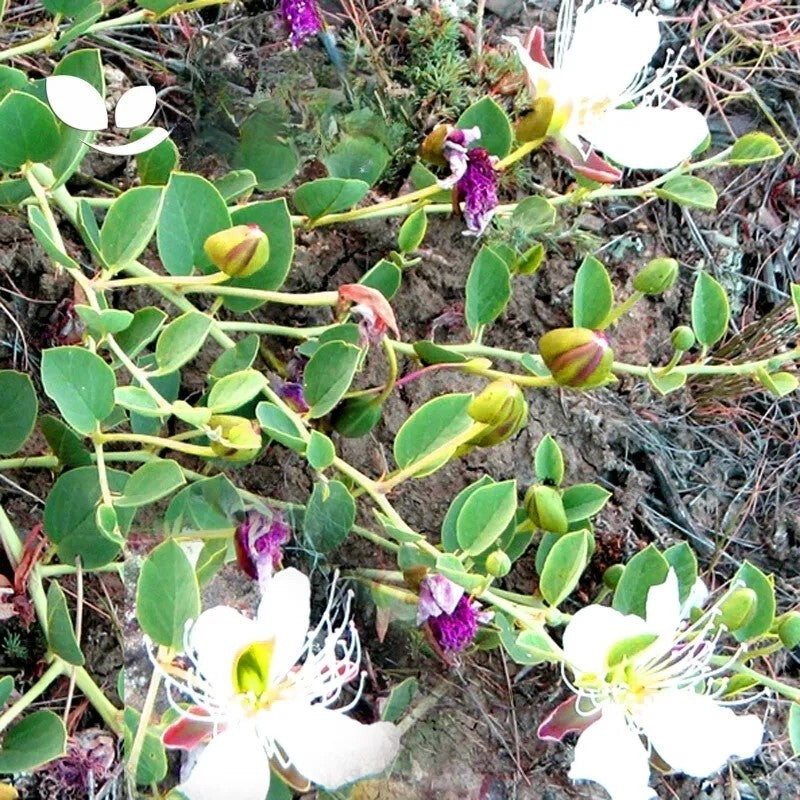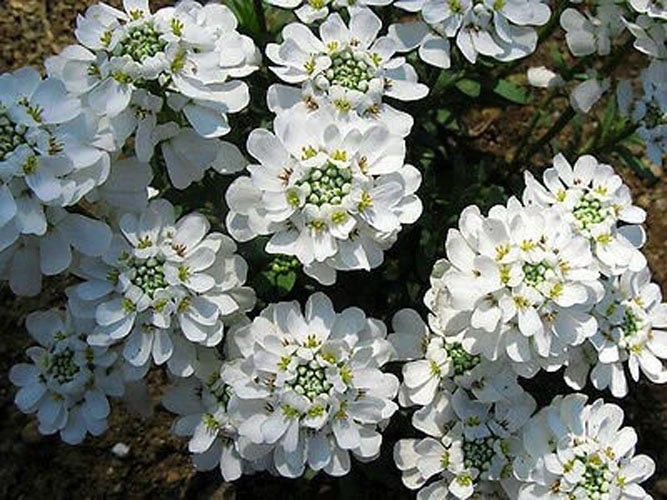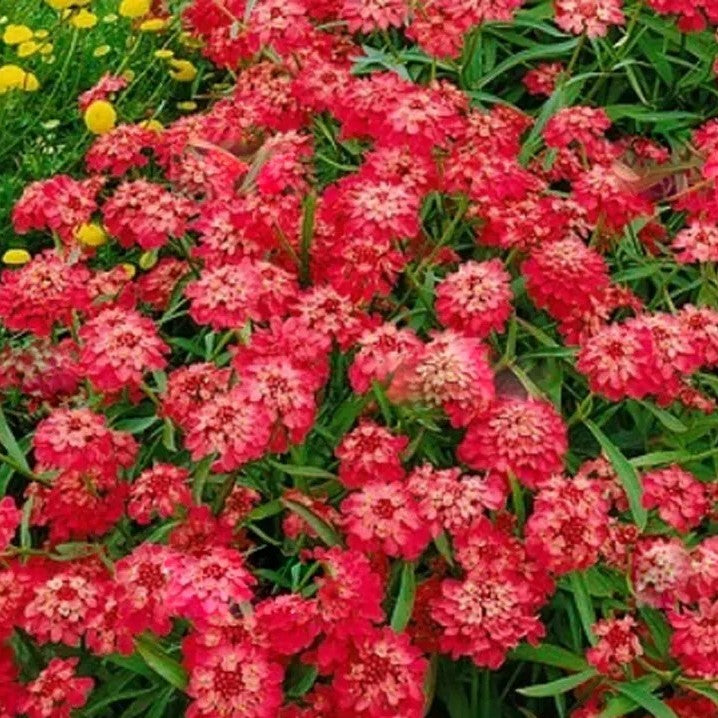Sort by:
435 products
435 products
Carnation ‘Sonata’ Mix Seeds (Dianthus plumarius)
A fragrant and colorful perennial, Carnation ‘Sonata’ Mix produces elegant, double blooms in shades of pink, red, and white. Compact and hardy, it’s perfect for borders, rock gardens, and containers, offering long-lasting color and sweet fragrance from late spring through summer.
What Makes It Special
-
Fragrant, double blooms in a mix of pink, red, and white
-
Compact, hardy, and ideal for borders, rock gardens, and containers
-
Long flowering season with vibrant, eye-catching colors
Key Features
-
Botanical name: Dianthus plumarius
-
Hardy perennial
-
Height: 15–20 cm (6–8 in)
-
Bloom time: Late spring to summer
Ideal For
-
Borders, rock gardens, and container plantings
-
Fragrant and colorful garden displays
-
Edging and small garden spaces
Sowing
-
Sow indoors Feb–Apr or outdoors Mar–May
-
Cover lightly with soil and keep moist
-
Germination: 14–21 days at 15–20°C
-
Thin seedlings 15–20 cm apart
-
Flowers in the first or second season after sowing
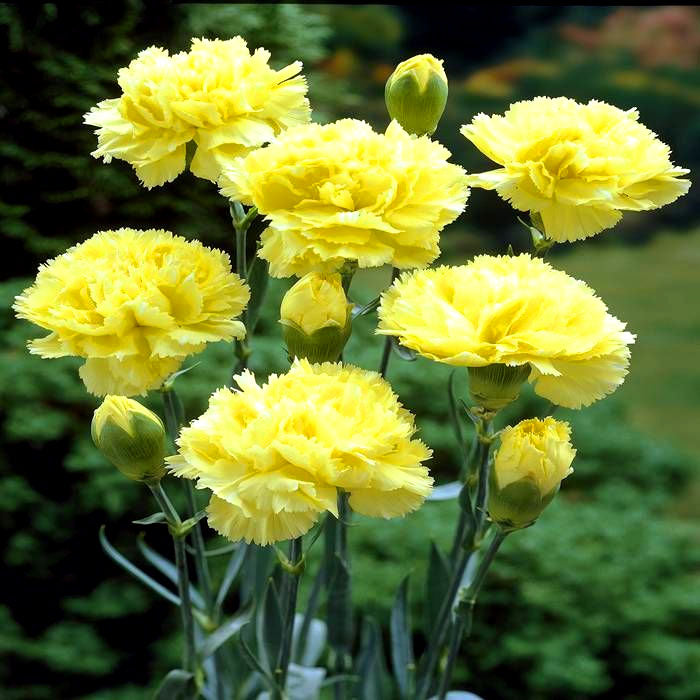

Carnation 'Marie Chabaud' - 350 seeds (Dianthus caryophyllus) Cutting Flower
£1.15
Unit price perCarnation 'Marie Chabaud' - 350 seeds (Dianthus caryophyllus) Cutting Flower
£1.15
Unit price perCarnation ‘Marie Chabaud’ Seeds (Dianthus caryophyllus) – Cutting Flower
Bring classic elegance to your garden with Carnation ‘Marie Chabaud’ (Dianthus caryophyllus). This hardy annual produces large, fragrant blooms in soft pink shades, perfect for cutting gardens, borders, and containers. Long-flowering and easy to grow, it’s ideal for fresh bouquets and floral arrangements.
How to Grow
-
Sow indoors 8–10 weeks before the last frost or directly outdoors after frost risk has passed.
-
Use well-drained, fertile soil in full sun.
-
Lightly cover seeds with soil and keep moist until germination (10–14 days).
-
Transplant seedlings when large enough to handle, spacing 20–25 cm apart.
-
Water regularly and remove spent flowers to encourage continuous blooming.
Key Features
-
Large, fragrant blooms in soft pink shades
-
Long-flowering, ideal for cutting gardens
-
Hardy and easy to grow
-
Perfect for fresh bouquets and floral arrangements
-
Attracts pollinators including bees and butterflies
Ideal For
-
Cutting gardens for fresh flowers
-
Flower beds, borders, and containers
-
Pollinator-friendly gardens
-
Floral arrangements and bouquets
Sowing
-
Best time: 8–10 weeks before last frost indoors or after frost outdoors
-
Germination: 10–14 days
-
Sow thinly, cover lightly, and keep soil moist
-
Prefers full sun and fertile, well-drained soil
Quick Tip
-
Regularly deadhead to prolong flowering and maintain healthy, vibrant blooms throughout the season.
Caper Bush – Seeds (Capparis spinosa)
The Caper Bush is a resilient Mediterranean perennial valued for its flavorful buds and aromatic leaves. Its small, edible buds are commonly pickled and used to enhance salads, sauces, fish dishes, and Mediterranean recipes. This drought-tolerant plant adds both culinary and ornamental value to gardens.
Slow-growing but hardy, the Caper Bush thrives in sunny, well-drained locations and can tolerate poor soils. Over time, it develops attractive sprawling branches and delicate white to pink flowers, followed by round seed pods.
How to Grow
-
Sow indoors: February – April
-
Sow outdoors: Spring in warm climates
-
Position: Full sun
-
Soil: Well-drained, sandy or rocky soil; avoid waterlogged conditions
-
Care: Water sparingly; prune to maintain shape and encourage flowering
Key Features
-
Hardy Mediterranean perennial with edible buds and aromatic leaves
-
Small, flavorful buds ideal for pickling and cooking
-
Drought-tolerant and low-maintenance
-
Produces delicate white-pink flowers and round seed pods
-
Suitable for sunny gardens, rockeries, or container cultivation
Harvest
-
Harvesting period: 2–3 years after sowing for mature buds
-
Pick buds before flowering for pickling and culinary use.
Short Tip
Provide full sun and well-drained soil to encourage healthy growth and abundant buds.
Cape Daisy Mix Seeds (Venidium fastuosum)
Add long-lasting summer color with Cape Daisy Mix (Venidium fastuosum). This hardy annual produces vibrant daisy-like blooms in shades of yellow, orange, and gold, bringing brightness to borders, beds, and containers. Easy to grow and drought-tolerant once established, it attracts pollinators and provides a cheerful display throughout the season.
How to Grow
-
Sow seeds directly outdoors in spring after the last frost or indoors 4–6 weeks earlier.
-
Use well-drained soil in full sun.
-
Scatter seeds thinly and cover lightly with soil.
-
Keep soil moist until germination (10–14 days).
-
Thin seedlings to 25–30 cm apart once established.
-
Deadhead spent flowers regularly to encourage continuous blooming.
Key Features
-
Vibrant daisy-like blooms in yellow, orange, and gold shades
-
Long-flowering, hardy annual
-
Easy to grow and drought-tolerant
-
Ideal for borders, beds, and containers
-
Attracts bees, butterflies, and other pollinators
Ideal For
-
Flower beds and borders
-
Containers, patio planters, and window boxes
-
Pollinator-friendly gardens
-
Cottage and naturalized garden styles
Sowing
-
Best time: Spring outdoors or 4–6 weeks earlier indoors
-
Germination: 10–14 days
-
Sow thinly, cover lightly, and keep soil moist
-
Prefers full sun and well-drained soil
Quick Tip
-
Deadhead regularly to maintain vibrant blooms and encourage prolonged flowering.
Cape Daisy ‘Orange Prince’ – Seeds (Venidium fastuosum)
Cape Daisy ‘Orange Prince’ (Venidium fastuosum) is a vibrant, long-flowering annual producing bright orange daisy-like blooms from summer to autumn. Its compact, bushy habit makes it perfect for borders, containers, and mixed flower beds. Easy to grow and low-maintenance, this variety attracts bees and butterflies, adding cheerful color and pollinator-friendly interest to your garden.
Why Grow "Orange Prince"
-
Bright orange, daisy-like blooms all summer to autumn
-
Compact and bushy, ideal for borders and containers
-
Attracts pollinators like bees and butterflies
-
Easy-to-grow, long-flowering, low-maintenance variety
Key Features
-
Type: Annual (Venidium fastuosum)
-
Height: 30–40 cm
-
Flowering: Summer to autumn
-
Position: Full sun
-
Uses: Borders, containers, beds, pollinator gardens
Ideal For
-
Adding vibrant color to borders, beds, and containers
-
Patio and balcony planting
-
Pollinator-friendly garden designs
-
Gardeners seeking long-flowering, low-maintenance annuals
Sowing & Growing
-
Sow indoors: 6–8 weeks before last frost
-
Sow outdoors: After frost danger has passed
-
Germination: 10–14 days
-
Space seedlings: 25–30 cm apart
-
Prefers well-drained soil and full sun
Canna ‘Indian Shot’ Mix – Seeds (Canna indica Mix)
Canna ‘Indian Shot’ Mix (Canna indica) is a striking annual producing lush foliage and vibrant flowers in a mix of red, orange, and yellow shades. These tall, tropical-looking plants add drama and color to borders, beds, and containers, flowering from mid-summer to autumn. Easy to grow in fertile, well-drained soil, Cannas are perfect for creating bold garden displays and attracting pollinators such as hummingbirds and bees.
Why Grow "Indian Shot" Mix
-
Stunning tropical foliage with bright, mixed-color flowers
-
Long flowering period from mid-summer to autumn
-
Tall and dramatic for borders, beds, and containers
-
Attracts pollinators and adds tropical flair
Key Features
-
Type: Annual (Canna indica Mix)
-
Height: 80–120 cm
-
Flowering: Mid-summer to autumn
-
Position: Full sun
-
Uses: Borders, beds, containers, tropical-style gardens
Ideal For
-
Bold summer displays and tropical-themed gardens
-
Container planting and patio decoration
-
Pollinator-friendly gardens
-
Adding height and vibrant color to mixed beds
Sowing & Growing
-
Sow indoors: February–April in trays or pots
-
Germination: 14–21 days at 20–25°C
-
Transplant outdoors after frost danger has passed
-
Space seedlings: 40–50 cm apart
-
Prefers fertile, well-drained soil in full sun
Candytuft 'Snowflake' Seeds (Iberis sempervirens)
Candytuft 'Snowflake' is a low-growing evergreen perennial prized for its dazzling carpets of pure white flowers in spring. Forming dense mounds of glossy green foliage, it provides year-round interest and thrives in borders, rock gardens, and containers. Hardy and easy to grow, it’s an excellent choice for groundcover and edging.
What Makes It Special
-
Masses of snow-white blooms in spring
-
Evergreen foliage for year-round appeal
-
Excellent groundcover and edging plant
Key Features
-
Botanical name: Iberis sempervirens
-
Hardy perennial
-
Height: 20–25 cm (8–10 in)
-
Spread: 30–40 cm
-
Bloom time: Spring
Ideal For
-
Rock gardens and borders
-
Groundcover and edging
-
Containers and sunny slopes
Sowing
-
Sow indoors Feb–Apr or outdoors Apr–Jun
-
Cover seeds lightly with fine soil
-
Germination: 14–21 days at 18–22°C
-
Space plants 25–30 cm apart
-
Flowers from the second year onward
Candytuft Carmine Red – Seeds (Iberis umbellata)
Candytuft Carmine Red (Iberis umbellata) is an annual producing vibrant carmine-red clusters of flowers from late spring to early summer. Its compact, bushy habit makes it perfect for borders, rockeries, and containers. Easy to grow and low-maintenance, this variety attracts pollinators and adds striking color and charm to any garden space.
Why Grow "Carmine Red"
-
Bright carmine-red flower clusters
-
Long flowering season from late spring to early summer
-
Compact and bushy, ideal for borders and containers
-
Attracts bees, butterflies, and other pollinators
Key Features
-
Type: Annual (Iberis umbellata)
-
Height: 25–30 cm
-
Flowering: Late spring to early summer
-
Position: Full sun
-
Uses: Borders, rockeries, containers, pollinator gardens
Ideal For
-
Adding vibrant color to borders, beds, and containers
-
Rockeries and patio planting
-
Pollinator-friendly garden designs
-
Gardeners seeking low-maintenance, long-flowering annuals
Sowing & Growing
-
Sow indoors: 6–8 weeks before last frost
-
Sow outdoors: After frost danger has passed
-
Germination: 10–14 days
-
Space seedlings: 20–25 cm apart
-
Prefers well-drained soil and full sun
Candytuft ‘Fairy Mix’ Seeds (Iberis umbellata)
Candytuft ‘Fairy Mix’ is a charming annual featuring clusters of small, delicate flowers in shades of white, pink, and purple. Its compact, bushy habit makes it perfect for borders, rock gardens, and containers. Easy to grow and long-flowering, it adds a soft, colorful touch to summer gardens and attracts pollinators.
What Makes It Special
-
Clusters of small, delicate flowers in white, pink, and purple
-
Compact, bushy growth ideal for borders and containers
-
Long-flowering and low-maintenance
-
Attracts bees and butterflies
Key Features
-
Botanical name: Iberis umbellata
-
Variety: ‘Fairy Mix’
-
Seed count: Approx. seeds per pack
-
Height/Spread: 20–30 cm tall, 20–25 cm spread
-
Position: Full sun; well-drained soil
-
Flowering period: May–July
Ideal For
-
Borders, edging, and rock gardens
-
Containers and patio displays
-
Pollinator-friendly gardens
-
Softening paths and garden edges
Sowing Instructions
-
When to sow: February–April indoors; March–May outdoors
-
How to sow:
-
Sow seeds thinly on the surface of moist seed compost and press lightly
-
Germination occurs in 10–14 days at 18–20°C
-
-
Transplanting: Thin or transplant seedlings 15–20 cm apart
-
Care: Water moderately; deadhead spent flowers to prolong blooming
Showing 378/435


